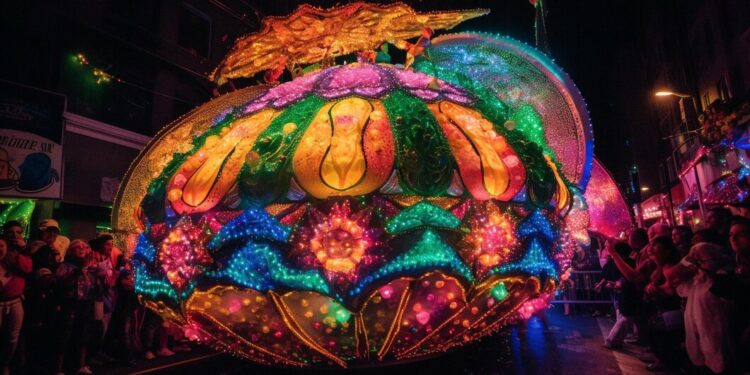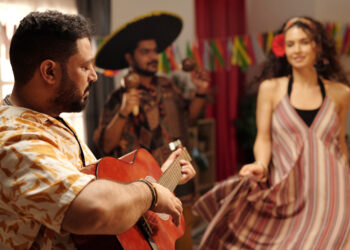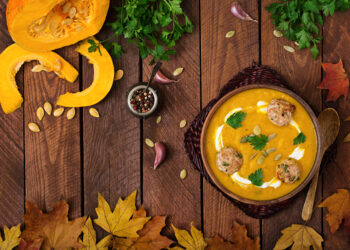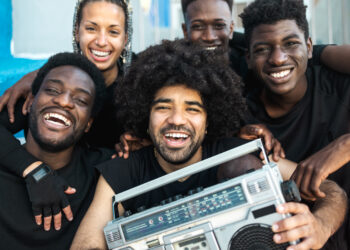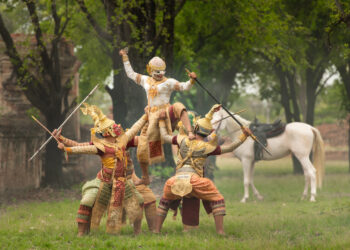Reveling in the Carnival Craze: A Mesmerizing Expedition through the Caribbean’s Grandest Street Festivals
Carnival Craze: A Journey Through the Caribbean’s Largest Street Parties
Definition of Carnival and its significance in Caribbean culture
Carnival, derived from the Latin word “carne vale” meaning “farewell to meat,” is a vibrant celebration deeply rooted in the cultural fabric of the Caribbean islands. It is an explosion of colour, music, and revelry that unites communities and showcases their unique customs.
This annual festival typically takes place in the weeks leading up to Lent, a period of fasting and reflection in Christianity.
Carnival acts as a joyous farewell to earthly indulgences before the solemnity of Lent begins. In Caribbean culture, Carnival holds immense importance as more than just a time of revelry.
It serves as an opportunity for individuals to express their identity, celebrate their heritage, and honour their ancestors who endured centuries of hardship during slavery. Through pageantry, music, dance, and intricate costumes, Carnival becomes a testament to resilience and unity among diverse communities.
Overview of the Caribbean’s largest street parties
The Caribbean region hosts some of the world’s most renowned street parties during Carnival season. Each island adds its unique flavour to this vibrant tapestry while maintaining common elements that define this jubilant occasion.
From Port-of-Spain in Trinidad and Tobago to Kingston in Jamaica, Bridgetown in Barbados to Nassau in The Bahamas – every destination offers its own distinct experience.
These street parties bring together locals and visitors from across the globe who flock to immerse themselves in this explosion of colour, rhythm, and community spirit.
They serve as a platform for showcasing local talents – from calypso singers belting out infectious melodies to craftsmen meticulously crafting elaborate costumes adorned with feathers, beads, sequins, and dazzling colours.
Carnival Craze takes you on a vibrant journey through the heart of the Caribbean, exploring the rich traditions, colourful costumes, pulsating music, and electrifying energy of the region’s largest street parties.
Carnival Craze invites you to embrace the kaleidoscope of cultural expressions found within Caribbean Carnival celebrations. Through this exploratory journey, we delve into the heart and soul of these remarkable events, uncovering their historical significance, unravelling the meaning behind mesmerizing costumes and masks, and experiencing the captivating rhythms that drive revellers into a frenzy.

The Origins and History of Carnival
Tracing back to ancient pagan festivals and European traditions
Carnival, derived from the Latin word “carne vale” meaning “farewell to meat,” can be traced back to ancient pagan festivals that celebrated the transition from winter to spring. These festivals were characterized by exuberant street processions, masquerades, and feasting.
As Christianity spread through Europe, these festivities merged with the pre-Lenten celebrations known as “carnivals.” Countries like Italy, Spain, and France embraced carnival traditions, each adding its unique flavours over time.
The revelry included extravagant parades with floats adorned in vibrant colours, masked participants engaging in playful theatrics, and an abundance of music and dance.
Influence of African culture during the era of slavery
The history of the Caribbean carnival is deeply intertwined with the transatlantic slave trade. During this dark chapter in human history, millions of Africans were forcibly brought to the Caribbean islands as enslaved labourers.
Despite enduring unimaginable hardships, these resilient individuals brought with them their rich cultural traditions that would eventually shape contemporary carnival celebrations. The enslaved Africans incorporated elements from their diverse ethnic backgrounds and merged them with existing European carnival practices.
They infused vibrant rhythms such as drumming, call-and-response chants, and traditional dances into the festivities. This infusion created a powerful fusion between African and European cultures that still resonates today.
Evolution into a celebration of freedom and cultural identity
As centuries passed, the Caribbean carnival evolved beyond its historical roots to become a celebration of freedom and cultural identity. It served as a way for formerly enslaved individuals to express themselves openly without fear or judgment.
Carnival provided a platform for marginalized communities to assert their autonomy through music, dance movements rooted in African heritage, and intricate costumes reflecting ancestral traditions.
Throughout history – from the abolition of slavery to the fight for independence – carnival became a symbolic representation of resilience, resistance, and cultural pride.
It was a time when individuals reclaimed their identity and showcased their unique cultural expressions, breaking free from the societal constraints that once held them captive.
Today, the Caribbean Carnival continues to thrive as an annual spectacle that transcends borders, bringing together people from all walks of life to revel in the joyous celebration of freedom, unity, and the vibrant tapestry of Caribbean culture.
The Essence of Caribbean Carnivals
Celebration of Diversity: Blending African, European, and Indigenous Influences
Caribbean carnivals are a vibrant celebration of the region’s diverse cultural heritage, seamlessly blending influences from Africa, Europe, and indigenous traditions. These festivals embody the spirit of unity by embracing the historical roots that have shaped Caribbean societies.
The African influence is deeply ingrained in the music, dance, and rhythmical beats that pulsate through the streets during carnival. European influences are evident in the elegant costumes adorned with intricate designs and elaborate masks.
The indigenous cultures contribute their distinct elements, such as ancestral rituals and folklore. It is this harmonious fusion of cultural threads that makes Caribbean carnivals unique and captivating.

Symbolism Behind Elaborate Costumes and Masks
The vibrant costumes worn during Caribbean carnivals serve as living works of art that express profound symbolism. Each costume tells a story; it is a visual representation of history, spirituality, and social status.
Feathers have long been an essential component of carnival attire and hold deep significance for participants. Feathers symbolize freedom—a powerful reminder of the emancipation from slavery experienced by many Caribbean nations.
They also represent spirituality as feathers are believed to connect humans with higher powers in some indigenous cultures. Beads and sequins play a prominent role in ornamenting carnival costumes, conveying notions of wealth and prosperity within Caribbean societies.
These shimmering embellishments reflect the desire for abundance and economic well-being among participants.
Through their elaborate costumes and masks adorned with feathers, beads, sequins, or other intricate details, revellers pay homage to their ancestors while simultaneously expressing personal stories or aspirations.
By embracing these symbols within their outfits during carnival celebrations—whether consciously or subconsciously—participants not only celebrate their cultural heritage but also inspire others to reflect on topics such as freedom, spirituality, and prosperity.
Caribbean carnivals are not just flamboyant spectacles; they are powerful showcases of identity, history, and the collective hopes of a diverse region.
Exploring Key Carnivals in the Caribbean Region
Trinidad Carnival: The “Mother” of all Carnivals
Trinidad Carnival holds a special place as the “Mother” of all carnivals in the Caribbean. With roots dating back to the 18th century, it has evolved into an extravagant celebration that unites people from diverse backgrounds.
This carnival boasts historical significance as one of the oldest in the Americas, embodying a rich tapestry of cultural influences.
One cannot mention Trinidad Carnival without acknowledging its iconic characters like “The Midnight Robber,” who mesmerizes with his poetic speeches and dramatic gestures, and “The Dame Lorraine,” known for her elaborate costume depicting a colonial-era lady.
Moreover, Trinidad’s carnival is incomplete without mentioning its birthplace of steelpan music. The vibrant sound of steel drums resonates through the streets, igniting an infectious energy that pulses throughout this magnificent celebration.
Jamaica Carnival: Where Reggae Meets Masquerade
In Jamaica, where reggae music flows through people’s veins, the carnival takes on a unique flavour that blends rhythm and masquerade. Jamaica Carnival is where vibrant colours and pulsating beats meet to create an unforgettable experience.
Here, reggae music becomes intertwined with carnival culture, infusing every corner with an irresistible groove that moves both body and soul. As you immerse yourself in this exuberant celebration, you can witness how Jamaican dancehall music influences costume design.
The costumes become an expressive canvas reflecting not only traditional elements but also contemporary trends inspired by dancehall fashion. Jamaica Carnival encapsulates the spirit of freedom and self-expression that emanates from this dynamic island nation.
Bahamas Junkanoo: An Explosion of Rhythm & Color
Prepare yourself for an explosion of rhythm and colour as we venture into the Bahamas Junkanoo, a carnival like no other. The rhythmic soundscape created by cowbells, drums, and horns reverberates through the air, setting the stage for this vibrant spectacle.
Junkanoo is an amalgamation of African, European, and indigenous influences that come to life in a fantastical parade. Elaborate costumes adorned with feathers, beads, and colourful fabrics adorn revellers as they move to an infectious beat.
The intricate craftsmanship of each costume reflects the dedication and passion of the Bahamian people towards preserving their cultural heritage. Bahamas Junkanoo is more than just a carnival; it is a testament to the resilience and creativity of a nation.
Conclusion
In this mesmerizing journey through the Caribbean’s largest street parties, we have witnessed the explosion of colour and energy that defines these carnivals.
From Trinidad’s historical significance and iconic characters to Jamaica’s fusion of reggae music with masquerade culture and the rhythmic symphony that engulfs Bahamas Junkanoo, each carnival represents a unique expression of Caribbean identity.
These vibrant celebrations serve not only as platforms for artistic expression but also as powerful symbols of unity in diversity.
As we experience these festivities together, we are reminded that despite our differences, music, dance, and celebration have the extraordinary power to bring us closer as one human family. Let us embrace these joyful traditions with open hearts and minds as we continue to celebrate life’s rich tapestry in all its glorious forms.


